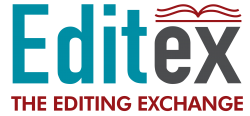Inclusive language has a simple purpose: to ensure that a piece of communication–it may be written or spoken–does not discriminate against groups of people in the community. Discrimination can range from exclusion to derogatory comments and can be based on gender, race, ethnicity, religion, disability, sexual orientation or other perceived differences. Often disparaged as ‘political correctness’, inclusive language in fact seeks to redress imbalances in spoken and written communication; instead of assuming the readers of a text or the audience of a speech are a homogenous group, inclusive language embraces diversity. For instance, where once many authors would have used the word ‘mankind’ to refer to humans as a group, now we would use ‘humanity’; the ‘man’ in ‘mankind’ can give an impression that women are not included as human, or are not as important as men. However, words such as ‘manhole’ are not always modified. ‘Personhole’ is neither elegant nor easily said: in this case, another word entirely would be more suitable. Drainhole perhaps? Sewerage hole? The word ‘chairman’ is often replaced with ‘chairperson’ or ‘chairwoman’. The simple ‘chair’ is also suitable in many contexts. However, chairman or chairwoman are appropriate if the person being referred to is an actual man or woman! Sometimes, sentences need complete rewriting to remove gender bias. See this example, taken from the Publication Manual of the American Psychological Association (APA) (6th ed): ‘When an individual conducts this kind of self-appraisal, he is a much stronger person’ becomes ‘This kind of self-appraisal makes an individual much stronger’ (p. 73–74) Modifying your nouns and pronouns to plural forms can often remove this kind of bias. Replacing ‘his’ (or ‘her’) with an article (‘the’ or ‘a’) can also overcome this problem. Again, from the APA manual: ‘A researcher must apply for his grant by September 1’ becomes ‘A researcher must apply for the grant by September 1’ (p. 74) It is normally better to use specific rather than generic words when discussing a group of people. For example, Aboriginal and Torres Strait Islander peoples often prefer to identify themselves according to their own-language name. It is inappropriate to refer to Aboriginal and Torres Strait Islanders as ‘natives’. The term ‘First Peoples’ is increasingly accepted among these communities. Generic terms are acceptable in certain contexts, such as government publications. ‘Indigenous’ is perfectly acceptable when referring to Aboriginal and Torres Strait Islanders, as is ‘migrant’ and ‘immigrant’ for new comers to Australia. The word ‘Australian’ is used to cover all sections of the Australian community, including both people born in the country, and those who migrated here and became citizens. When discussing people with disabilities, the preference is to minimise the disability or difference, as in the following examples: person with a disability (instead of ‘disabled person’) person with a mental illness (instead of ‘mentally ill person’) person with visual impairment (instead of ‘blind person’) These constructions help to retain focus on the person, rather than their disability. Generally, using inclusive language is something that becomes easier once you get used to it. You can refer to style guides, university resources and government documents for more examples and suggestions. If you consider your text carefully, you will not only remove any inappropriate biases, you may also end up with a much more elegant piece of writing.

